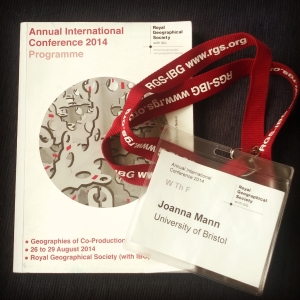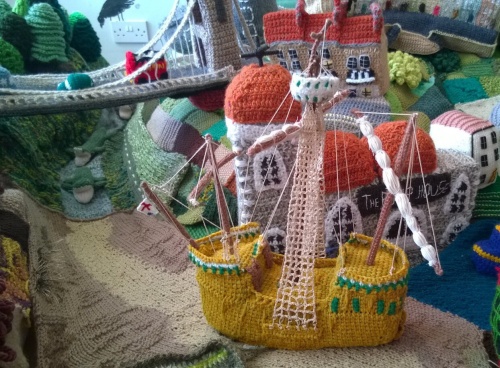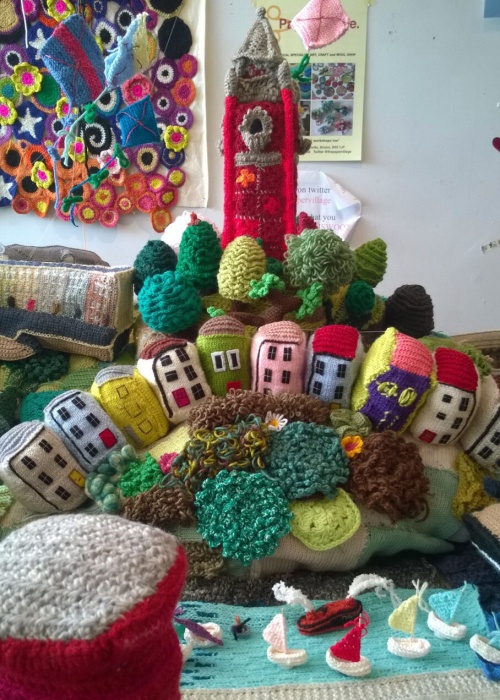
RGS-IBG 2014 is done and dusted. It was a hectic few days, but I saw heaps of great talks and met some lovely fellow geographers! The session Merle and I organised on skilled practice went really well, and we thought we would put our introduction up on our respective blogs for those who couldn’t make it on the day. Without further ado – here it is!
Introduction to Geographies of Skilled Practice and Co-production Joanna Mann and Merle Patchett
These two sessions stem from our shared interest in skilled craft practices, in both historical and contemporary contexts. Independently and collaboratively we have been attempting to theorise and practice a range of skills, repeatedly coming back to questions concerning how to define, recognise, and witness skill.
Skill is an inherently conflicted subject, with a myriad of definitions, applications, and understandings. The accepted OED definition is taken as ‘the ability to do something well’, with an etymology lying in the Old Norse word for discernment and knowledge. This older conception understands reason as a faculty of the mind, and speaks to the orthodox view that skill is the application of knowledge, serving to reinforce the sense of a mind-body spilt. More contemporary understandings quoted by the dictionary, however, speak to skill as a form of practical or embodied knowledge. Rather than foreclose understandings of skill and skilled practice, this session is a forum for exploring conceptions, characterisations, and applications of skill within and beyond geography.
Broadly situated, we understand these two sessions to fit in with the growing interest into the geographies of crafting, making and mending. To date much of this scholarship has sought to underline the social, economic and political potentials of craft and DIY ‘making cultures’ for responding to post-capitalist relations in a messy post-disciplinary environment. However, our concern with the focus on DIY cultures and ‘make do and mend’ philosophies is what happens to the place and relevance of skill?
If skilled practice is defined as the ability to ‘do something well’, are these (often) quick-fix solutions, combined with the availability of new technologies and learning platforms, leading to an impoverished conception of skill in the 21st century, whereby anyone can learn to become a plumber, coder or a taxidermist in a day?
Or is it simply the case that we are becoming skilful in different ways, in different settings and through different means?
Our specific interest in skilled practice emerges from a concern to move beyond interest in short-lived making and learning cultures, to instead think through the more long-term and committed geographical and bodily dynamics involved processes of enskilment. Yet rather than perpetuate romantic and static conceptions of skill, we seek to draw attention to the ways in which skill has always been dynamically co- and re-produced in both the past and the present. Furthermore, taking account of David Pye’s assertion that the crafts have no unique purchase on the matter of skill, we have compiled this session to showcase how research reaches areas as diverse as music, contemporary art, and digital technologies.
As geographers our understandings of skilled practice are shaped by a wide range of work, both within and outside of our own discipline. However the work of anthropologist and long-time theorist of skill Tim Ingold has perhaps been the most influential in terms of rethinking skill in recent years. Ingold’s body of work has steadily overturned the orthodox view that skill is the mere application of knowledge, by demanding instead a perspective that situates the practitioner, right from the start, in the context of an active engagement with the constituents of his or her surroundings.

According to Ingold’s ‘dwelling perspective’, skills are neither innate nor acquired, but are rather ‘grown’: “incorporated into the human organism through practice and training in an environment” (Ingold 2000: 5). Ingold’s focus on practical enskilment, conceived as the embodiment of capacities of awareness and response by environmentally situated agents, has therefore helped us to overcome the overly rigid divisions between mind and body, and ‘art’ and ‘technology’ that have plagued prior theorisations of skill.
Moreover, by arguing that skills are ‘ecologically’ rather than ‘culturally’ produced, Ingold has highlighted that skills are not static ‘cultural traditions’ that are passed on by processes of learning from generation to generation, but are rather ‘regrown’ in each, responding to the specificities of particular ‘ecologies of practice’.
As such, the essence of skill for Ingold comes to lie in the improvisational ability with which practitioners are able to disassemble the constructions of a craft or technology, and creatively to reincorporate the pieces into their own walks of life. François Sigaut goes so far as to call this the law of the irreducibility of skills (cited in Ingold 2011:62), whereby even the emerging technological work of the digital age demands that skills are, in Ingold’s terms, ‘re-grown’.
However, while theoretically Ingold’s pronouncements on skill do not sit uneasily with the ‘ecologies of practice’ of the digital age, when selecting ethnographic material to substantiate his arguments he has tended to focus on the comparative study of hunter-gatherer and pastoral societies, drawing particularly on his early research on northern circumpolar reindeer hunting and herding peoples. As such Ingold’s work has be criticised at best for having little or nothing to say about the skills required for the digital age and at worst for putting certain ‘ecologies of practice’ in aspic. Moreover, although Ingold has helped us to overcome the overly rigid division between the works of human beings and those of non-human animals, the fundamental focus in his work, unsurprisingly for an anthropologist, is the role of the human in the development and practice of skill.
By contrast, a particularly exciting move in geography at the moment is the way in which this human focus is being de-centred by theoretical influences such as non-representational theory and new materialist currents of thought which are increasingly changing the way we understand and interact with the world. For example the re-focusing of cultural geographic concerns on bodily-practices has turned attention away from cognition and representation to issues of embodiment, performance, skill and affect understood as relational and distributive forces and competencies that cut across human-nonhuman divides. These geographic arguments thus promote a modest and inclusive approach to understanding the social which depends on: ‘a philosophy of epistemological detail’ (Deleuze 1994: xix), the foregrounding of tacit knowledge (Rheinberger 1997), and ‘knowing interestingly’ through the development of rich and original articulations (Latour 2000).
A number of interesting and exciting studies have emerged of late, many picking up on these prevailing theoretical currents and empirical orientations. These include, for instance, Caitlin DeSilvey et al’s stories of menders in Southwest England, Richard Ocejo’s examination of cocktail bartenders, and Tim Edensor’s study of stonemasonry. In all of these instances, the work carried out is seeking to access knowledge which is rooted in deep practice and elucidate it for means of preservation, theoretical exemplification, or the passing-on of techniques.
These examples all highlight the way geographers work with skilled practitioners to co-produce knowledge. Arguably, they also showcase the way in which geographical research is a skilled practice in its own right. There are a plethora of methods available to the geographer, all of which require practice, refinement, and engagement to employ successfully.
Conventionally, geographers have used techniques such as ethnography, interviews, archival research, and participant observation. Auto-ethnography is favoured by Erin O’Connor as an invaluable tool to understand ‘learning by doing’ in the realms of glass blowing. Similarly, Merle’s research into taxidermy practice highlights how the position of learner or apprentice can be a highly instructive context from which to enquire into the decidedly more-than-human sensory, bodily and affective registers of certain forms of skilled practice. Joanna, meanwhile, has found material-led interviews useful, going beyond a straight-forward question-and-answer format into a series of demonstrations, lessons, and experiments within practitioner’s workspaces.
 (Picture from Steve Kenward’s ‘Made not manufactured series’)
(Picture from Steve Kenward’s ‘Made not manufactured series’)
All these techniques broadly encapsulate the recent turn towards practice-based inquiry that has witnessed academics using and honing their own skills, new and existing, as part of their research. James Ash, for instance uses his existing skills of video gaming to theorise affect, temporality, and technicity, whereas David Paton applies his experiences with stonemasonry to address materiality. Furthermore David Bissell has drawn on his experience of witnessing skilled performances in golf to challenge the ‘slow-creep dynamic’ through which skills and proficiencies are understood to evolve and become refined over time through repetition and habit. Following a decidedly anti-humanist logic Bissell has gone as far to argue that skills ‘might be better understood as competencies that temporarily possess us: fragile proficiencies that evolve in ways that unsettle the predictabilities inherent to more slow-creep understandings of practical refinement’ (2013: 127). The emergence of skill for Bissell therefore becomes less about trust in the narrowing and perfecting of movements through the drilled repetition of practices and more about the supple exposure to more volatile forms of life that just might develop the skill in a new direction.
Problems arise, however, when we want to access skilled practices of the past. Although the studying of embodied practices and skills of the past should be a central concern of the historical geographer because ‘as one of the chief sources of renewal of social systems… practices and skills are, in a sense, a motor of history’ (Glennie and Thrift 2004: 154) and therefore historical geographies, there is often very little in the historical record to mark them. As Gagen et al (2007:5) point out ‘the passage of time erodes the ‘presence’ of past practices and we must, by necessity, forgo any claims to the possibility of recovering in fullness realms of lived gesture, touch, and emotion’. This is especially so for skilled practices given that many skills were ‘passed-on’, or rather ‘re-grown’, largely tacitly and performatively, as in the case with craft guilds and apprenticeship schemes.
One method around this problem has been to use archival fragments in an attempt to reconstruct and reimagine the past. Increasingly, researchers of historical geography are finding that the notion of historicising does not need to mean deadening what has gone before. Instead they are enlivening the archive in ways which reveal the dynamic and distributed nature of past skilled practices, and are even showing that the leftover pieces of a craft or technology can be creatively reincorporated into the research process and their own walks of life.
We have devised a few questions to act as a shared touchstone over the next two sessions. They are by no means the sole focus for what follows, but hopefully a good starting point and a basis for a larger group discussion at the end of session two.
- What is the relevance of skill in the 21st Century?
- What is skill? How do we co-produce it?
- As geographical researchers, how do we witness skill in the past and present?
- How do we understand and trace the ‘passing-on’ of skill?
- How do we theorise skill as a collective endeavour?
- What is the relationship between skill and technology, historically and in the present?
These two sessions will showcase contemporary research into skill, as well as the skill of research. We’re interested in placing/grounding skill – not necessarily as something that is locatable in one particular body, but in the entanglements through which it comes into being and is sustained, lost, and recovered. In turning towards a notion of skill that is simultaneously embodied, placed, tethered, relational and distributed, we look forward to learning more about the practices, politics, histories, and futures of skill.
Key References:
Adamson, G. (2007) Thinking Through Craft Oxford: Berg.
Ash, J. (2010) Architectures of affect: anticipating and manipulating the event in processes of videogame design and testing Environment and Planning D: Society and Space 28(4), 653-671.
Bissell, D. (2013). Habit displaced: the disruption of skilful performance Geographical Research 51(2), 120-129.
DeSilvey, C., Ryan, J., & Bond, S. C. (2013) 21 Stories Cultural Geographies,
Edensor, T. (2012) Materiality, time and the city: the multiple temporalities of building stone Spatialities: The Geographies of Art and Architecture 35-52.
Ingold, T. (2000) The perception of the environment: essays on livelihood, dwelling and skill Psychology Press.
Ingold, T. (2011) Being alive: Essays on movement, knowledge and description Taylor & Francis.
O’Connor, E. (2005) Embodied knowledge The experience of meaning and the struggle towards proficiency in glassblowing Ethnography 6(2), 183-204.
Ocejo, R. E. (2012) At your service: The meanings and practices of contemporary bartenders European Journal of Cultural Studies 15(5), 642-658.
Patchett, M. (2014) ‘Witnessing craft: employing video ethnography to attend to the more-than-human craft practices of taxidermy’, in Charlotte Bates (ed) Video Methods: Social Science Research in Motion Routledge.
Paton, D. A. (2013). The quarry as sculpture: the place of making Environment and Planning A 45(5), 1070-1086.














